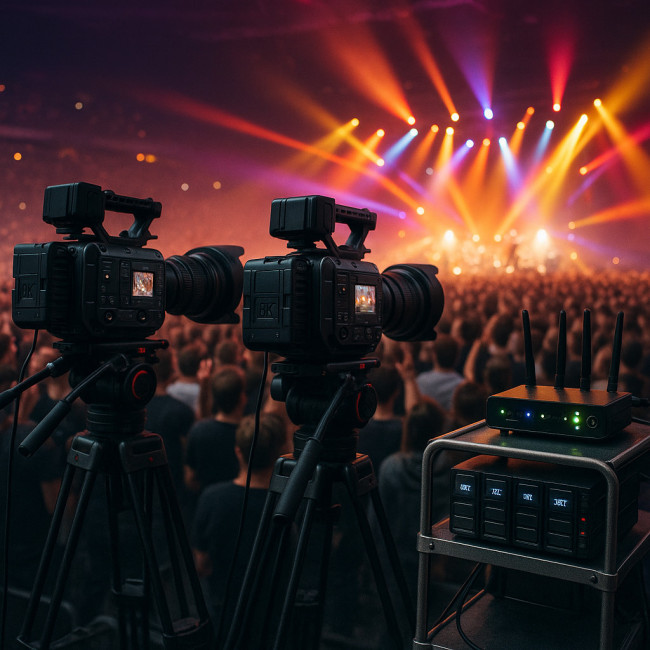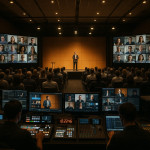Gear redundancy strategies: filming high-stakes events without downtime
High-stakes events—live concerts, sports finals, product launches—allow zero retakes. A single equipment failure can cost priceless moments and your reputation. Discover how to build bullet-proof redundancy into every layer of your video rig, from power to post, so you keep rolling whatever happens.
Why redundancy is non-negotiable at live events
Unlike controlled studio shoots, live events unfold once. Missing a keynote reveal or the winning goal could mean breach of contract, refund demands, or reputational damage that follows you online. Investing in duplicate or fail-safe gear turns “what if” panic into confident delivery.
- Financial risk: Client refunds, overtime, or reshoots.
- Brand risk: Negative reviews inside the event videographers directory.
- Legal risk: Liability clauses if moments are lost.
The hidden ROI of backups
Redundancy adds upfront cost but slashes downtime. A spare $700 recorder that saves a $40 000 contract pays for itself instantly. Clients remember reliability more than camera model.
Map every potential point of failure
| Component | Primary Gear | Backup Strategy | Typical Fail-over Time |
|---|---|---|---|
| Power | V-mount battery | Hot-swap plate + AC mains adapter | <10 s |
| Storage | CFAST card | Dual-slot recording to SD or SSD | 0 s (parallel) |
| Camera Body | Flagship 6K cinema cam | Secondary mirrorless on same mount | <60 s |
| Audio | Wireless lav set | Hard-wired XLR feed + onboard scratch mic | 0–5 s |
| Network/Stream | Venue ethernet | Bonded 4G/5G router | <20 s |
Layer 1 – Power continuity
Hot-swap battery plates
Install dual V-mount plates so you insert a fresh battery while the second keeps current flowing. Brands like Core SWX or Anton Bauer offer REG (redundant energy grid) plates that deliver sub-five-second swaps.
UPS for the control desk
Your vision mixer, recorders and encoders should feed from a 1000–2000 VA uninterruptible power supply. It buys ten minutes—enough to connect to house power or pull a generator.
Diversify power sources
- Venue mains via conditioner.
- Battery bank for mobile rigs.
- Small inverter generator for outdoor shoots.
Layer 2 – Redundant capture paths
Dual-slot recording
Many cinema cameras now write simultaneously to CFast and SD/SSD. Test both media types at max bitrate before show day.
Secondary camera angle
Mount a locked-off wide shot on a second body. If your main camera fails, you still deliver complete footage. This tactic pairs well with the live-shoot risk-management framework.
Proxy recording inside the encoder
Hardware encoders like the Blackmagic Web Presenter HD can record H.264 proxies to SD cards. Even if camera files corrupt, you hold a usable 1080p master for social recaps.
Layer 3 – Audio peace of mind
Triple-source rule
- Wireless lav/handheld on the talent.
- XLR feed from the desk into a dedicated recorder.
- On-camera shotgun for ambient backup.
This mirrors best practice in field-ready documentary kits and keeps audio recoverable even if RF drops out.
Frequency coordination
Scan the venue in advance, lock frequencies, and store a spare receiver-transmitter pair pre-synced for instant swap.
Layer 4 – Live stream resilience
Bonded cellular routers
Units such as LiveU or Teradek Bond merge four SIMs. If the venue's fibre line dies, viewers notice at most a one-second hiccup.
Cloud restreaming redundancy
Send one RTMP feed to AWS MediaLive and a second to YouTube Studio. Should one CDN stutter, viewers auto-buffer from the other.
Layer 5 – On-site data wrangling
Three-two-one rule in real time
- 3 copies: Dual media + cloned SSD.
- 2 different formats: CFast & NVMe.
- 1 off-site: Encrypted cloud upload from venue.
Automate cloning with tools like Hedge or ShotPut Pro so the DIT stays ahead of card swaps.
Layer 6 – Post-production insurance
Even after wrap, backups avoid costly reshoots. Off-site copies accelerate footage repurposing for multiple deliverables.
Kit checklist: pack it, label it, test it
- Primary & spare camera bodies with matching timecode.
- Four matched media cards per body.
- Hot-swap battery plates + 150 % extra cells.
- UPS rated for full desk draw + 30 % headroom.
- Two field recorders with XLR splitters.
- Bonded router plus pre-loaded SIMs from different carriers.
- Rugged SSD array for on-site cloning.
Environmental considerations
Choose gear rated for the venue's temperature and humidity. Sustainable, low-draw LED panels align with the eco-friendly filming initiative and reduce generator load.
Workflow rehearsal: the secret weapon
Schedule a full dress rehearsal 24 hours before live. Simulate battery swaps, card changes and network failovers. Team muscle memory eliminates panic when a real fault occurs.
FAQ
- How many spare batteries should I carry?
- Plan 150 % of the projected consumption. If a two-hour event needs four 98 Wh packs, bring six.
- Is dual-slot recording enough redundancy for storage?
- No. Clone one of the cards to SSDs on-site to avoid silent corruption walking into post.
- What's the fastest way to back up during an event?
- Use a laptop-free cloning device such as Nexto or GNARBOX; it starts copying as soon as you insert the card.
- Do I need two identical cameras?
- Identical sensors ease matching in the edit, but a colour-matched mirrorless will suffice if your budget is tight.
Quick knowledge check
Next step: build your bespoke redundancy kit

Audit your current gear, identify single points of failure and start adding backup layers today. Clients browse showreels but hire dependability. Ready to level up? Explore our guide to forming AV vendor alliances and turn fault-tolerant workflows into premium packages.
Call to action: Need hands-on advice? Book a 30-minute strategy session and we'll blueprint your event-proof rig.











